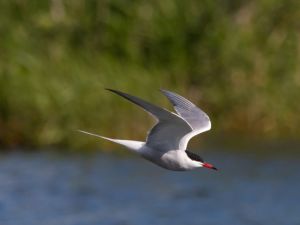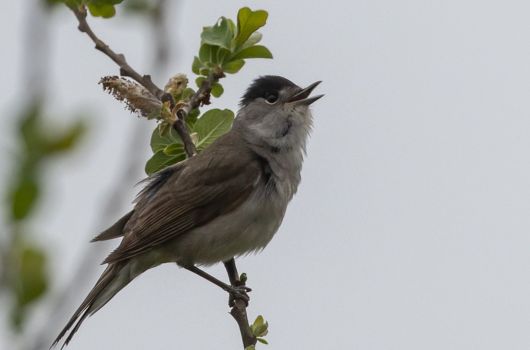RTS surveys reveal migratory bird trends
We caught up with River Thames Scheme (RTS) ecologist Wendy O'Neill to discuss migratory birds and what our ongoing surveys are revealing about their populations in the area.
What types of migratory birds are in the area?
A multitude of bird species migrate to England (including Surrey) either for our mild winters or warm summers. Every year the county sees influxes of spring migrants that choose it as the place to breed. These birds are principally insectivores and feast off the numerous insects that are available, as well as the berries provided by shrubs and trees – all of which provide fuel for their outward migration.
 During our River Thames Scheme (RTS) surveys, we have noticed an increase in the numbers of warblers recorded during the breeding season. Chiffchaff, whitethroat and blackcap are present in high numbers at this time, while other less common species, such as lesser whitethroat, common tern, hobby and cuckoo have also been recorded during our surveys.
During our River Thames Scheme (RTS) surveys, we have noticed an increase in the numbers of warblers recorded during the breeding season. Chiffchaff, whitethroat and blackcap are present in high numbers at this time, while other less common species, such as lesser whitethroat, common tern, hobby and cuckoo have also been recorded during our surveys.
Of greatest conservation concern is the cuckoo, which has been lost from swathes of lowland England due to declines in food and in the species which it parasitises. Willow warbler, associated with willow trees and carr [wet] woodland, is also being lost in southern England due to habitats becoming warmer and drier because of climate change.
What will the planned wetlands and biodiversity areas of the RTS mean for migratory birds?
The range of habitats within the RTS, such as rivers, streams and lakes, woodland, scrub and grassland, is attractive to migrant species. Retention of this combination of habitats throughout the development of the project will benefit many migratory birds.
Will the RTS bring back bird species that used to breed in and visit the area?
Climate change has driven changes in distribution of many species and migrants are no exception. While willow warblers and cuckoos are being lost, England was colonised by Cetti's warbler in the 1970s (this is a bird which receives the highest protection under the Wildlife and Countryside Act (1981) as amended) and is now widespread across most of England.
Other colonists we expect to follow suit in the next few decades include black-winged stilt, an elegant black and white wader which now breeds in small numbers annually. It is likely this will be followed by other species such as serin, bee-eater and Blyth's reed warbler, which are all widespread in Europe and increasingly show signs of colonisation.

